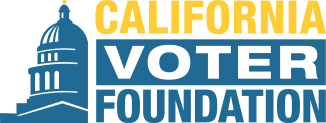Excerpt:
Retired high school teacher and Monrovia resident Stephen McCarthy is the kind of careful, consistent responsible voter get-out-the-vote activists dream about.
“I have never missed an election going back to when I had to stamp a paper ballot in 1972, and I have never missed an election since,” Murphy told KCRW recently.
So you can imagine how McCarthy felt, when on primary election day in June, workers at his local polling place told him that both his and his wife’s names weren’t on official voter rosters.
“I was appalled,” said McCarthy. “I was shocked. I was angry.”
McCarthy and his wife were allowed to vote using provisional ballots that get counted after the election, but it was a huge frustration for them. And the McCarthys weren’t the only voters having troubles on Election Day in June.
In all more than 118,000 names of registered voters in Los Angeles County didn’t appear on rosters in more than a third of all polling places.
It was a big blunder, and Dean Logan, L.A. County’s top election top official even contacted some voters personally to apologize, including Stephen McCarthy.
-------
An investigation later found that voters’ names were tossed off the paper rosters when a computer software glitch made it look like they were too young to vote.
“The data got corrupted so their birthdates all went null,” said Logan.
But the 118,000 names that went missing from the voter rosters in June wasn’t L.A. County’s only election problem. In the November 2016 presidential election there were complaints about broken voting machines, polling stations running out of ballots, and, yes, names missing from voter rosters.
In the 2008 primary election, there was the so called “double-bubble” problem. A confusing ballot required “no party preference” voters to fill in more areas of the ballot. When the ballots were only partially filled out, it’s believed to have possibly cost the votes of thousands of people.
Kim Alexander with the California Voter Foundation said that, when taken together, these incidents show a persistent pattern of problems in L.A. County’s election system.
“There have been in the last ten years major voting problems in L.A. County,” Alexander said, “resulting in people being routinely frustrated with the barriers that they’re facing at polling places trying to vote.”
She added that problems at the polls can drive people from ever voting again. And they might even convince family and friends not to go vote because the process is so frustrating.
“And what happens when people have those kinds of voting experiences is that they become like a cancer in the system,” said Alexander.
L.A. County’s Dean Logan said no matter how meticulous the planning, election problems, are if not inevitable, at least understandable in the county. There are more than five million registered voters and in countywide elections, 5,000 polling places are open, making the logistics of voting here more complex than most states and many countries.
-------
But there are big changes coming to how L.A. County votes, which are supposed to solve past problems and finally bring elections in country’s most populous county into the 21st Century.
It’s called VSAP, or Voting Solutions for All People.
Changes will begin this upcoming election with new easier-to-understand vote-by-mail ballots. But VSAP’s big changes will occur in the 2020 elections.
One of the most noticeable differences is that L.A. County’s 5,000 polling stations will be gone. They’ll be replaced by 500-700 voting centers, with people being able to cast their ballots at any of them instead of the closest to their homes. (full story)

